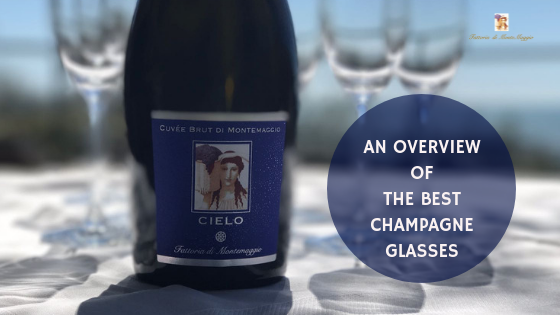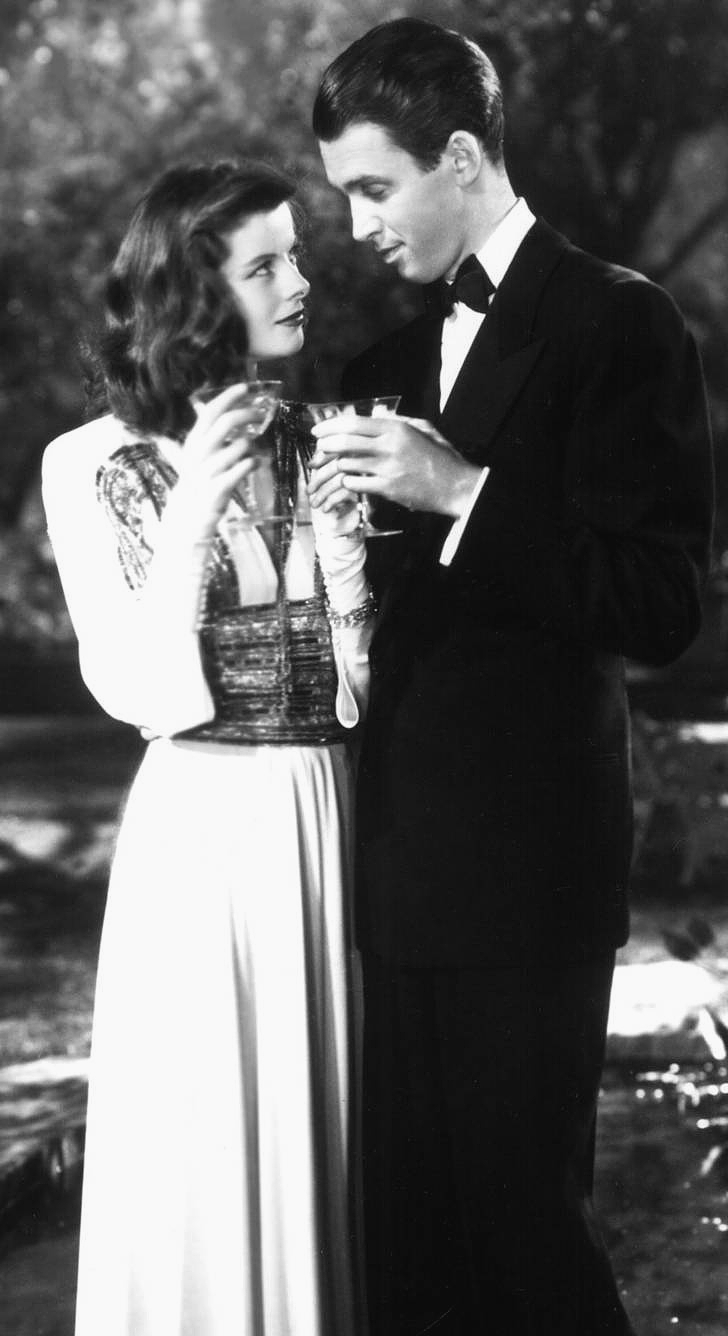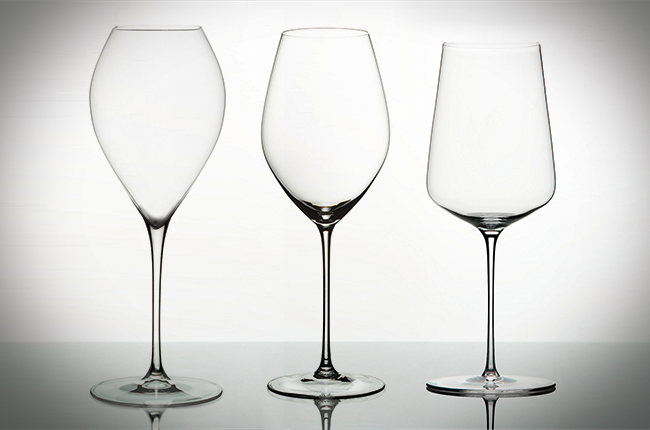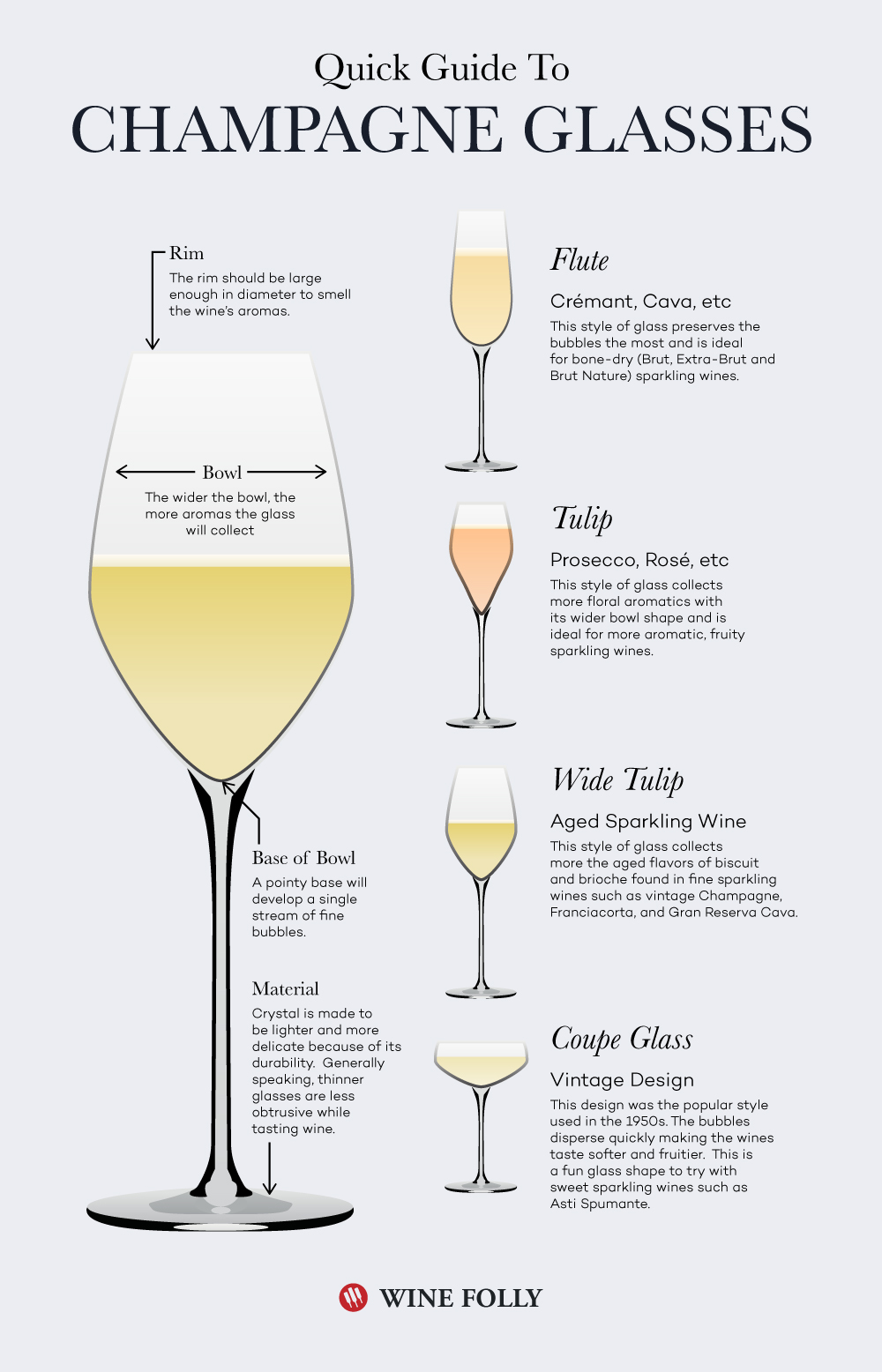
Overview of Champagne History & Champagne Glasses
Champagne is a beverage that has always had an air of luxury around it. Whether it was among the aristocracy in 18th-century France or among more contemporary film stars.
“In a perfect world, everyone would have a glass of Champagne every evening.” – Willi Gluckstern
Today, Champagne is a sparkling wine that is more accessible for people in general even if it still gives an expression of luxury and magic. There are many artisanal Champagne producers who nowadays make fabulous products – so-called Grower Champagne – and to good prices.
Another important aspect is the kind of glass that Champagne is served in. There have been many opinions on and studies about this throughout the years. In later years, the French sommelier Philippe Jamesse has worked to research and develop the ideal Champagne glass and more recently the British physicist Helen Czerski has published research where she has studied the development of bubbles and aromas in a Champagne glass.
In this article, we will dig deeper into this discussion. So, read on to learn more about the history and the latest discoveries regarding the best Champagne glass to use with your Champagne of choice.
A Bit of Champagne History
Champagne was the drink of kings and queens in Europe in past times. Especially in the 18th century, where the first painting depicting the act of drinking Champagne is believed to be from the court of Louis XV. The painting in question is of a post-hunt oyster lunch, Le Déjeuner d’Huîtres, by Jean-François de Troy that could be found in Louis XV’s dining room.
The coupe
Louis XV was a big fan of Champagne as was his chief mistress Madame de Pompadour. Here we arrive at the myth around the design of the Champagne coupe. Some consider it to have been modeled on the breast of Helen of Troy, others on the breast of Madam de Pompadour, and most perhaps on the breast of Marie Antoinette, the last French Queen before the French Revolution. The coupe is indeed thought to have its origin in the Greek goblets or cups.
“Champagne is the only wine that leaves a woman beautiful after drinking it.” – Madame de Pompadour
The idea that the coupe glasses were modeled on any kind of breast be it Marie Antoinette’s or any other woman’s is probably false and just a myth. But it makes for a good backstory to the Champagne glass. It has, however, given a certain sex appeal to the Champagne coupe throughout the years. Even more so when it became the favorite Champagne glass of film stars such as Marilyn Monroe, Sophia Loren, and Kathrine Hepburn.

Hepburn and Stewart in The Philadelphia Story Source: commons.wikimedia.org
The favoring of Champagne coupes in 18th-century Europe might have to do with the fact that Champagne in that period was not a beverage to sip on and savor, rather it was a beverage that you drank as we drink tequila or vodka shots today. The perlage was furthermore seen as something disturbing and with the coupes you could quickly dissipate the bubbles.
The flute
The flute glass started being used more and more in the 1950s even if it was not invented in that period. In fact, the flute glass stems from the 18th century when there was a transition from metal and ceramic to glassware for drinking wine. The forerunner to the flute is considered to have been the Jacobite glass that was used in England from the mid-17th century.
Those in favor of the flute in the 1950s believed it to better be able to prolong the persistence of the classic Champagne bubbles. By the 1980s and 90s, the Champagne coupe was almost completely out of fashion. Today, the flute and the coupe are both used and thanks to Scott Fitzgerald and The Great Gatsby revival, the coupe has become trendy again.
“He who doesn’t risk never gets to drink Champagne.” – An old Russian proverb.
Other Champagne glasses
The more committed Champagne enthusiasts prefer the tulip-shaped glass as they stress that it both prolongs the bubbles and makes it possible to feel the aromas. This is very similar to a whiskey or a brandy glass, though with a longer stem. Other Champagne fans prefer a normal wine glass when drinking Champagne.
In the early 2000s, Philippe Jamesse (head sommelier at Les Crayères in Reims) was not satisfied with the flute and therefore he contacted the glassware maker Lehmann to together develop a glass that was larger in the middle and narrow towards the top. The glass that was introduced in 2008 is called the Grand Champagne glass and is a part of the Lehmann Jamesse collection.
Jamesse did not stop here, he continued to look further into the aspects of the best shape for a Champagne glass by doing research together with Gérard Liger-Belair, a physicist at the University of Reims. They concluded that a glass with a ‘spherical shape encourages vertical movement, (and) respects the role of the mousse’. Furthermore, the bubbles can burst at the widest point of the glass and ‘free its flavors’ allowing the expression of ‘aromatic subtlety’. (See MW Anne Krebiehl’s article in Decanter, Farewell to Champagne flutes in 2016)
Riedel, the Austrian glassware maker, later on also developed a teardrop-shaped glass that has a larger bowl-form and narrows down towards the top.

Jamesse Grand Champagne glass; Riedel Veritas Champagne Wine glass; Zalto Dank’Art Universal glass Source: www.decanter.com
“I drink champagne when I win, to celebrate… and I drink champagne when I lose, to console myself.” – Napoleon Bonaparte”
Helen Czerski, a study of bubbles
In the book Bubbles: A Ladybird Expert Book, the British physicist Helen Czerski talks about the science of bubbles. She looks further into the column of bubbles that you can see rising from the lower center of the glass and defines it as a ‘bubble engine’ that transports the Champagne fluid with it up towards the top of the glass. While the bubbles remain at the top the liquid then descends on the sides. This mechanism also brings with it flavors that are then dissipated in the air above the glass. This is how the flavors of the Champagne are sent up your nose.
She says that with a flute the bubbles are rising very fast and flavors are sent out in the air but then disappears very fast. When it comes to a coupe the bubbles rise very slowly and that is better for bringing the flavors with them but then, just as with the flute, the flavors disappear up in thin air.
According to Helen Czerski, the best glass is one with the shape of a brandy glass because you then have both the slow bubble engine rising with a lot of complex flavors and these aromas then stay in the air on the narrow top of the glass. In that way, you can feel all the aromas by holding the glass to your nose. (See this article Stop using Champagne flutes – this is the best way to drink Champagne by Nathaniel Lee and Jessica Orwig in Business Insider.)
This is very interesting research but perhaps not really anything new when it comes to Champagne. Rather it can be seen as a continuation on the research and work carried out by Philippe Jamesse and the French physicist Gérard Liger-Belair in France a decade earlier.

Source: www.winefolly.com
Cielo di Montemaggio
Fattoria di Montemaggio produces a sparkling Brut wine made with Chardonnay grapes since recently. It is a very fresh and mineral wine with a fine perlage that is perfect for an aperitif, seafood, or other lighter dishes. If you have visited Fattoria di Montemaggio for a wine tour and tasting you might remember that Ilaria or Francesco sabers a bottle to start the tasting experience. The tulip-shaped or brandy-like glass is surely perfect for tasting this lovely sparkling wine. (See the featured photo above.)
Be sure to see the other wines Fattoria di Montemaggio.
“Champagne should be cold, dry and hopefully, free.” – Christian Pol Roger
A Sparkling Conclusion
As we have seen there is an interesting history behind every Champagne glass, and they have filled different functions at different times in history. Today, Champagne enthusiasts and professionals prefer to use standard wine glasses or a more tulip-shaped, brandy-like, glass. In that way, it is easier to have a vertical rising of the bubbles as well as freeing the flavors and keeping them at the top of the glass.
For many Champagne is not only about the best way to feel the flavors at the nose or getting the bubbles to rise in the best manner, but rather a Champagne glass is often also a fashion statement. As we have seen the coupe was very trendy up until the 1950s among film stars. In reality, the coupe has never really gone out of fashion. Others still prefer the flute when sipping on Champagne.
Among wine connoisseurs, the tulip-shaped or more brandy-shaped glass that is larger in the middle and narrow at the top is, however, the glass they prefer to use nowadays.
Written by Katarina Andersson.
Sources:






Leave a Reply